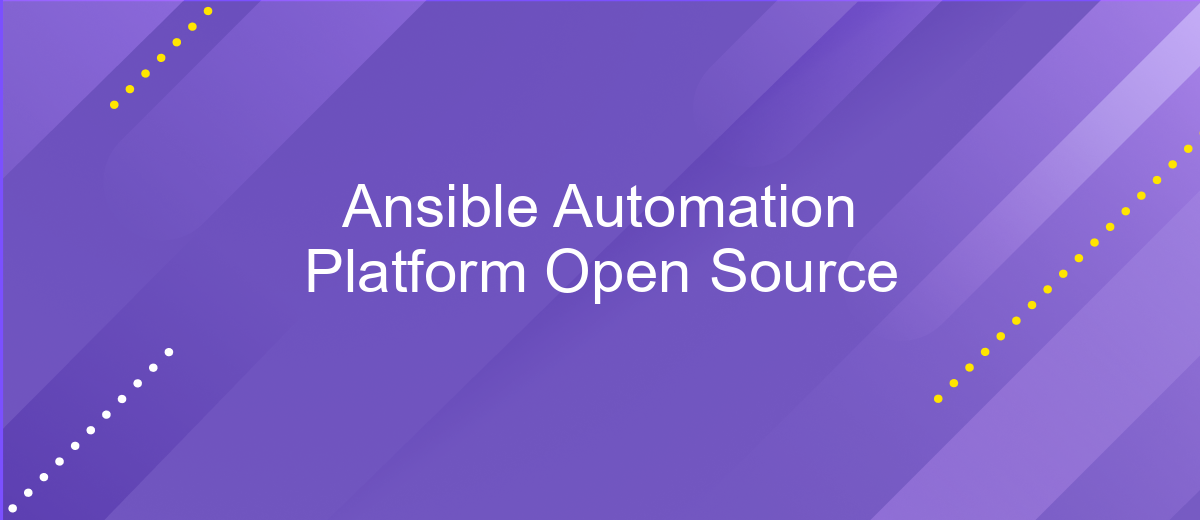Ansible Automation Platform Open Source
The Ansible Automation Platform is a powerful open-source tool that streamlines IT automation, making it accessible and efficient for organizations of all sizes. By leveraging a simple, agentless architecture, it enables seamless management of complex deployments and configurations. This platform empowers teams to automate repetitive tasks, enhance productivity, and ensure consistency across diverse environments, ultimately transforming the way businesses operate in the digital age.
Ansible Automation Platform Open Source
Ansible Automation Platform Open Source is a powerful tool that simplifies IT automation, enabling organizations to manage complex deployments and streamline operations. As an open-source solution, it provides flexibility and community-driven innovation, making it accessible for businesses of all sizes. By leveraging a vast ecosystem of modules and plugins, users can automate tasks across various environments, from cloud services to on-premise infrastructure.
- Community-driven development ensures continuous improvement and innovation.
- Extensive library of modules for diverse automation needs.
- Seamless integration with existing IT systems and tools.
- Scalable architecture suitable for enterprises and small businesses alike.
- Strong focus on security and compliance standards.
Incorporating Ansible Automation Platform Open Source into your IT strategy can significantly enhance operational efficiency and reduce manual workload. Its ability to automate repetitive tasks not only minimizes human error but also frees up valuable resources, allowing teams to focus on more strategic initiatives. Moreover, the open-source nature of the platform encourages collaboration and knowledge sharing, fostering a vibrant community that continually contributes to its growth and success.
Introduction

The Ansible Automation Platform is a powerful open-source tool designed to simplify and streamline IT automation processes. It enables organizations to manage complex IT environments with ease, providing a unified framework for orchestrating tasks across various systems. By leveraging Ansible, users can automate repetitive tasks, enhance productivity, and reduce the risk of human error. This platform supports a wide range of integrations, making it versatile enough to meet the diverse needs of modern IT infrastructures.
One of the key features of Ansible Automation Platform is its ability to integrate seamlessly with other services, enhancing its functionality and reach. For instance, integrating with services like ApiX-Drive can further simplify the process of connecting different applications and automating workflows. ApiX-Drive offers a user-friendly interface to set up integrations without the need for extensive coding knowledge, enabling users to focus on optimizing their automation strategies. This synergy between Ansible and integration services ensures that businesses can efficiently manage their operations while staying agile in a rapidly evolving technological landscape.
Key Features

Ansible Automation Platform Open Source provides a robust framework for automating IT processes across diverse environments. It simplifies complex tasks, enabling IT teams to focus on innovation rather than manual operations. With its open-source foundation, the platform fosters collaboration and rapid development, ensuring that users benefit from the latest advancements in automation technology.
- Scalability: Easily manage thousands of nodes with efficient resource allocation and minimal overhead.
- Extensibility: Leverage a rich ecosystem of modules and plugins to customize automation workflows to meet specific needs.
- Security: Implement role-based access control and integrate with existing security protocols to safeguard sensitive operations.
- Flexibility: Support for multiple cloud providers, operating systems, and network devices ensures seamless integration into any IT landscape.
- Community Support: Benefit from a vibrant community that contributes to continuous improvement and provides extensive resources for troubleshooting and learning.
By adopting Ansible Automation Platform Open Source, organizations can streamline their IT operations, reduce human error, and accelerate the deployment of applications and services. Its comprehensive feature set empowers teams to automate repetitive tasks, optimize infrastructure management, and enhance overall productivity, making it an invaluable asset in the modern digital ecosystem.
Benefits

Ansible Automation Platform Open Source offers a robust framework for automating IT tasks, streamlining operations, and enhancing productivity. By leveraging the power of open-source, organizations can customize and adapt the platform to meet their specific needs, ensuring a tailored fit for diverse environments. This flexibility empowers teams to innovate and scale their automation efforts efficiently.
One of the key advantages of Ansible Automation Platform is its community-driven development. With a vast network of contributors, users benefit from continuous improvements and updates, ensuring the platform remains cutting-edge and secure. This collaborative approach fosters a dynamic ecosystem where best practices are shared, and innovations are rapidly integrated.
- Cost-effective: Open source reduces licensing costs and allows for budget-friendly deployments.
- Scalability: Easily scale automation efforts across various environments and infrastructures.
- Integration: Seamlessly integrates with existing tools and systems, enhancing overall efficiency.
- Security: Regular community updates ensure vulnerabilities are addressed promptly.
In conclusion, Ansible Automation Platform Open Source is a powerful tool for organizations seeking to enhance their IT operations through automation. Its open-source nature, coupled with a vibrant community, provides a cost-effective, scalable, and secure solution that adapts to the ever-evolving technological landscape. By adopting this platform, businesses can achieve greater agility and operational excellence.
Getting Started
To begin your journey with Ansible Automation Platform, first ensure you have a compatible environment. Install Ansible on a Linux-based system, such as CentOS or Ubuntu, by following the official installation guide. Once installed, familiarize yourself with the command-line interface and basic commands. Create an inventory file to list your managed nodes and begin experimenting with simple playbooks to automate routine tasks. This foundational knowledge will empower you to leverage Ansible's full potential.
For seamless integration with other applications, consider using services like ApiX-Drive. ApiX-Drive simplifies the process of connecting various platforms, allowing you to automate workflows without extensive coding. By integrating ApiX-Drive with Ansible, you can streamline data exchange and enhance your automation capabilities. As you progress, explore Ansible's extensive documentation and community resources to expand your skills and tackle more complex automation challenges. This hands-on approach will help you become proficient in using Ansible Automation Platform effectively.
FAQ
What is Ansible Automation Platform?
Is Ansible Automation Platform open source?
How can I integrate Ansible Automation Platform with other tools?
What are the benefits of using Ansible Automation Platform?
Can Ansible Automation Platform be used for cloud automation?
Strive to take your business to the next level, achieve your goals faster and more efficiently? Apix-Drive is your reliable assistant for these tasks. An online service and application connector will help you automate key business processes and get rid of the routine. You and your employees will free up time for important core tasks. Try Apix-Drive features for free to see the effectiveness of the online connector for yourself.

